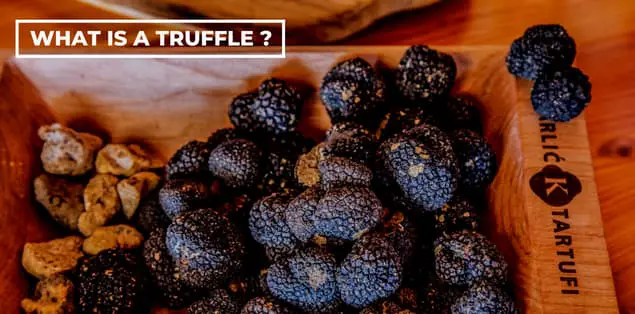Truffles are one of the most intriguing ingredients you’ll ever use in cooking. We’re not referring to the truffles you may find in a Valentine’s Day chocolate box. Instead, we’re referring to the distinctive-appearing “mushrooms” frequently used in elaborate dishes and high-end cooking. The flavor and smell of truffles quickly elevate truffle recipes, whether shaving fresh truffles on top of spaghetti, white truffle butter incorporated into mashed potatoes, or truffle oil drizzled over French fries.
When thinking of culinary delicacies, the elusive truffle may come to mind first. What then is this pricey product, and how do you use it at home?
What Is a Truffle?
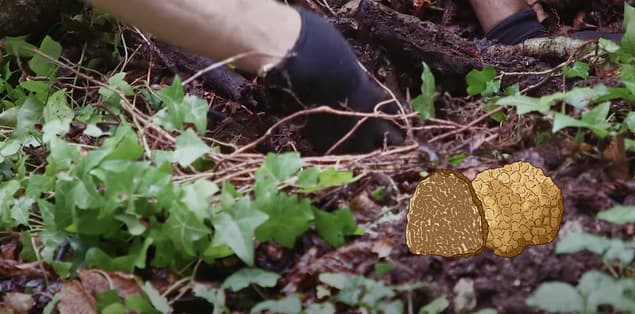
How Do Truffles Grow? Truffles are spore-containing edible fungi that resemble mushrooms. They grow underground, in contrast to mushrooms, and are subterranean. In addition, some individuals call truffles “mushrooms.”
Truffles, an enigmatic delicacy, are typically offered as an infused oil or salt, but they are also sporadically presented freshly chopped or shredded at some high-end restaurants.
Truffles are the edible spores that develop on a subterranean fungus belonging to the Tuberaceae family.
They are exceedingly challenging to find and quickly lose their taste after being harvested, but many people in the culinary world view them as a gourmet delicacy. These reasons make them among of the most costly meals on the planet. Depending on the variety, they can cost up to $4,000 per pound (Italian white truffles are typically the most expensive).
Truffles are now grown and harvested all over the world around the roots of trees in moist environments.
What Does Truffle Look Like?
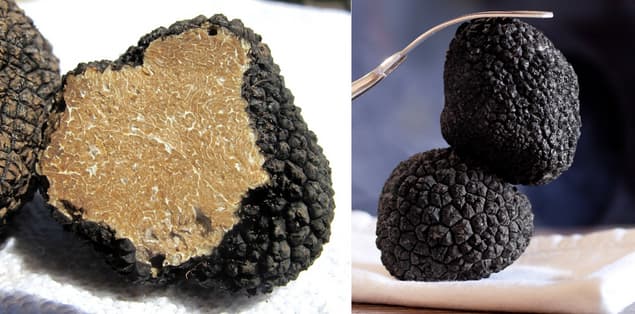
The organism that dwells in and around the natural habitat where truffles develop gives them their form and appearance. They resemble circular hard sponges and grow next to tree roots.
The exterior of the Burgundy truffles is dark brown or black and features tiny lumps.
How Do Truffles Grow?
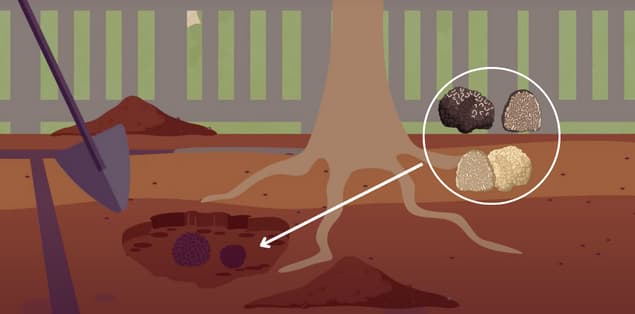
Truffles are fungi, similar to mushrooms. They grow underground and attach to the roots of trees.
Even though most people are familiar with and understand what mushrooms are, truffles develop very differently from most mushroom species. Most mushroom species prefer decomposing organic material like rotting trees, sawdust, grains, or wood chips to establish. These sources offer the best environmental conditions and readily accessible nutrients to assist mushroom growth.
On the other hand, truffles bind themselves to the roots of poplar, oak, hazelnut, beech, birch, or pine trees to grow in synergy with trees. Due to their particular association, truffles can supply their host organisms with essential nutrients and minerals like magnesium, phosphorus, and iron from the soil. Truffles receive sugars and other carbs from the tree as compensation for their labor, which aids in their growth.
Truffles require a distinct set of conditions to thrive. White and black winter truffles are gathered throughout the autumn and winter in the best truffle-growing locations because they grow best in relaxed, wet, humid environments. Rainfall helps moisten the truffles and facilitates their growth while making nutrients more accessible.
Since truffles grow underground, soil chemistry is also essential. The pH of the soil should be between 7.5 and 8.3 for truffles to thrive as best they can.
What Does a Truffle Taste Like?
Although it would be unfair to compare truffles’ flavor to mushrooms, that’s where we must begin to describe how they make you feel after consuming them.
Truffles have an earthy, meaty, gamy flavor similar to above-ground mushrooms. Some people claim that truffles taste exactly how they smell, i.e., smoky, nutty, and earthy; sweet and juicy, and stingingly salty, like black olives.
Producers of the most widely used tubers are in France, Italy, Spain, and China. Still, some importers are the United States, Mexico, Poland, the Netherlands, Australia, and New Zealand. Although the environments of these countries are somewhat similar, each one produces truffles with slightly varied tastes.
Various circumstances can influence the unique flavor of a species of truffles. The type and fertility of the soil, period of harvesting, and location can all impact the taste of truffles. Also, all truffles don’t taste the same; even those from the same species can vary in flavor depending on where they were grown.
Where to Buy Truffles?
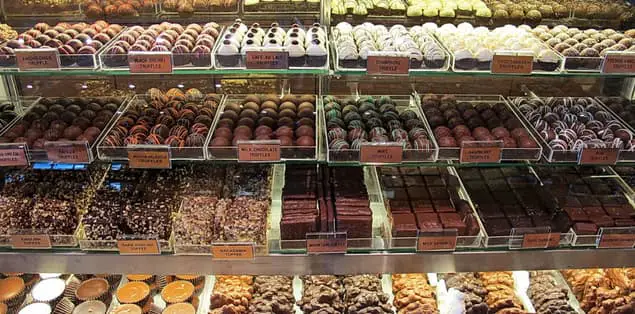
Truffle purchases are not simple. It’s easiest to go truffle hunting on your own or get them directly from a forager because they are so uncommon and perishable.
Depending on your location and the season, you might find them at Italian specialty shops and premium food stores.
We can buy truffles online by the pound, although this can get rather expensive since you have to pay overnight shipping on top of the already expensive purchase price due to their delicate nature.
How to Store Truffles?
Since truffles are exceedingly delicate, we must use them right away. As soon as their harvest, they begin to lose quality. You can use fresh truffles for a few days in the following situations:
1) Put the truffle in a jar with an airtight container.
2)To minimize moisture and prevent moisture loss, add dry ice to the container.
3) Keep in the refrigerator for five days maximum; the truffle will taste better the sooner you consume it.
Black Truffle vs. White Truffle
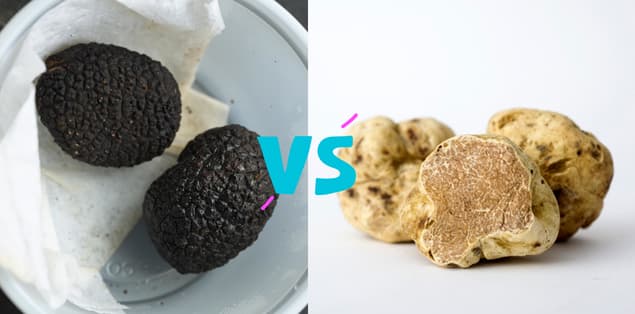
More than 200 truffle kinds exist, each with a unique flavor, cost, and application. White and black truffles are the two main types of truffles. Examples of truffles are Black Périgord Truffle, Winter Truffle, Black Summer Truffle, Black Winter truffle, Burgundy Truffle, Bianchetto Truffle, and White Alba Truffles.
Black truffles
Since black truffles are typically less expensive than white ones, the typical home cook can more easily afford them. However, we can use them frequently in sauces, compound butter, risottos, and other dishes despite having a less fragrant flavor and higher heat tolerance.
The Périgord area of France is home to some of the most well-known black truffle varietals.
White Truffles
Native to northern Italy, white truffles are indeed a delicacy. They taste more potent and more fragrant. White truffles are scarce and have a unique aroma, hence we can frequently consume them in little amounts. They are frequently used as a garnish or shaved over refined foods such as fresh pasta and risotto.
Is a Truffle a Nut or Mushroom?
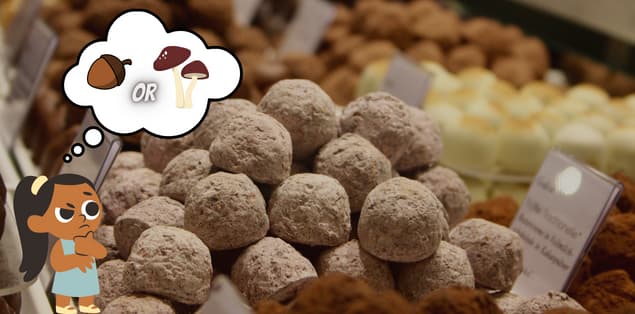
Truffles are underground plants that grow on tree roots, unlike ordinary mushrooms.
Are Truffles Mushrooms?
Truffle are edible mushroom-like fungi. They grow underground near tree roots, unlike mushrooms, and the most excellent truffles are outrageously, insanely expensive, occasionally costing thousands of dollars per pound.
Are Truffles Nuts?
A chocolate truffle is a specific kind of chocolate confection prepared traditionally with a chocolate ganache center and a coating of chocolate, cocoa powder, coconut, or chopped and toasted nuts (commonly hazelnuts or almonds), typically in the form of a sphere, cone, or curve.
So we can conclude that truffles are neither mushrooms nor nuts, but they resemble some qualities of mushrooms and nuts.
What Is So Special About a Truffle?
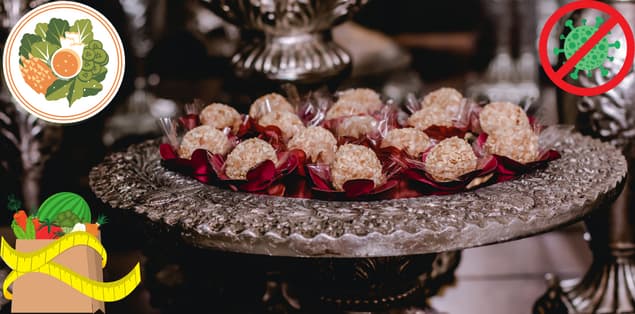
Truffles are rich in essential vitamins and minerals and have a unique nutrient profile. They include saturated and unsaturated fatty acids and micronutrients, including vitamin C, phosphorus, salt, calcium, magnesium, manganese, and iron. They are also high in carbohydrates, protein, and fiber.
Surprising Health Benefits of Truffles
1. Enriched with vital nutrients: Truffles are abundant in carbohydrates, fiber, and several minerals and are a complete source of protein.
2. High antioxidant content: Truffles are rich in various essential antioxidants, which may lower your chance of developing chronic diseases, slow the formation of cancer cells, and lessen inflammation. However, more study is required.
3. Great antibacterial qualities: Numerous bacterial strains can grow less rapidly when truffles are present, according to several test-tube research. Human research is lacking, though.
4. May help kill cancer cells: Test-tube research suggests that truffles may possess anticancer qualities and may aid in preventing the spread of specific cancer cell types.
5. Can aid in reducing inflammation: Truffles have been shown in numerous test-tube tests to help lower inflammation and improve general health.
How Do You Eat Truffles?
Before eating, truffles should be grated or thinly sliced with a truffle slicer and added to dishes, sauces, or soups. The heat will destroy the flavor and aroma if you cook the truffle.
3 Simple Ways to Enjoy Truffles
1) Add truffles to the mixture to make scrambled eggs more opulent. In a skillet, prepare eggs as you usually would. Grate the truffle right before serving.
2) To give the pasta a slightly garlicky flavor, shave truffles over it. Toss the noodles with Olive oil, salt, pepper, and thinly sliced truffles, and add a light cheese on top.
3) To make an excellent garnish, combine shredded truffles with butter. Butter’s fat keeps the flavor of the truffles fresher for longer.
Why Are Truffles So Expensive?
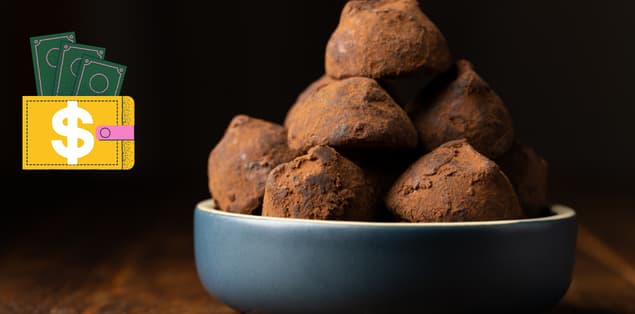
Real truffles are pretty expensive and have a very short lifespan. These seasonal mushrooms grow under trees and vary from location to region, depending on the climate. Natural fresh truffle hunting requires a lot of labor, and sniffer dogs hunt for the truffles.
Furthermore, real truffles can develop an unpleasant odor in just five days after being dug up. Truffles are grown uniquely; while the host trees get their phosphorus from the truffles, the truffles that grow around the tree roots get their glucose from the trees, and when it comes time to harvest the truffles,,, animals are used to dig up the expensive mushrooms. That is why truffles are so expensive!
Where Can You Find Truffles?
Truffles are typically found and grown in temperate regions of Australia, western North America, and Mediterranean Europe.
Within a few days (and sometimes hours) of being harvested, they make their way into some of the top restaurant kitchens in the world.
Final Words
The sustainability of the environment, rarity, scarcity, and the fluctuating tastes of the eating population are all critical factors in the world of truffles. So even if the earthy, intense flavor of truffles isn’t your thing, the more you understand them, the easier it is to enjoy them.
